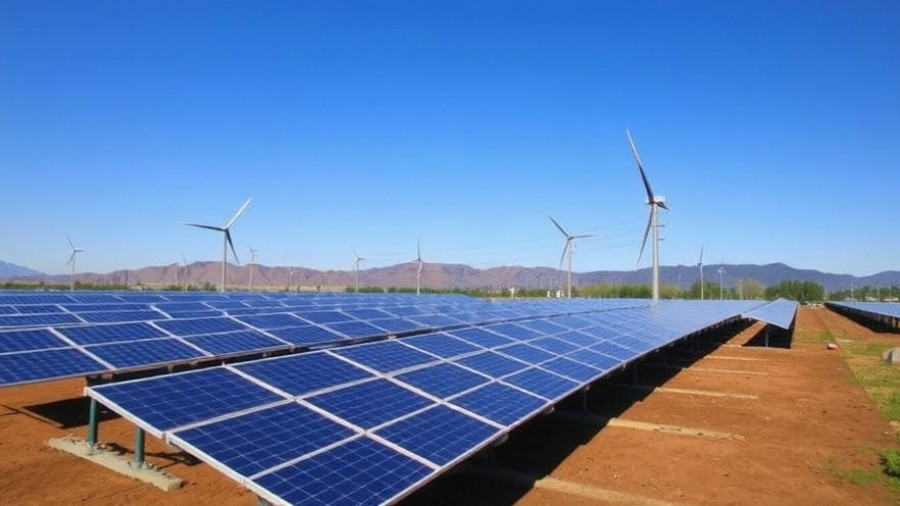
Big Investment Signals Confidence in Solar Growth
As the U.S. solar energy market continues to evolve, the recent commitment of $165 million from a global infrastructure fund reaffirms widespread confidence in solar power as the next frontier in energy production. Despite facing challenges stemming from recent political shifts and economic variables, the broader trend indicates that solar remains the most efficient and cost-effective solution to meet America’s rising electricity needs.
Understanding the Impetus Behind the Investment
The investment by Copenhagen Infrastructure Partners into Ampliform highlights a significant understanding of the current electricity landscape. As noted in a recent analysis, the U.S. solar capacity is on pace for record growth, with nearly 18 gigawatts installed in the first half of 2025 alone. These figures illustrate that renewable energy—particularly solar—continues to dominate the new power generation market, accounting for about 82% of newly deployed capacity, especially when combined with storage technologies.
Adapting to Market Conditions
Despite expected challenges from policy uncertainties and rising interest rates affecting financing, Ampliform is determined to innovate. Their strategic goal is to develop 10 gigawatts of solar projects by 2025, showcasing a commitment to large-scale efforts even amid economic headwinds. By understanding essential market dynamics and navigating the challenges, projects such as this are adjusting their timelines, but still remain viable long-term.
Solar's Political Legitimacy: Here to Stay
The rise of solar investment across both traditionally red and blue states marks a significant transition in the American energy narrative. Notably, states like Texas, Indiana, and Ohio have emerged as lead players in the solar revolution. This development underscores a collective realization that renewable energy adoption can bridge partisan divides while offering practical benefits such as energy independence and job creation. According to the Solar Energy Industries Association (SEIA), this bipartisan growth is critical as it builds resilience against potential policy rollbacks in the future.
Why Solar Investment is Worthwhile
Investing in solar is not just a response to rising electricity costs; it reflects a fundamental shift in how businesses and individuals view energy resilience. Current trends show that businesses are increasingly turning to solar solutions to stabilize their operational budgets. By leveraging solar power, organizations can hedge against unpredictable energy market fluctuations and rising costs, save on long-term expenses, and significantly reduce their carbon footprint.
Future Outlook: Optimism through Challenge
While the current conditions present hurdles, the overall outlook remains positive. Analysts predict continued high growth rates in installations, especially as innovations in technology and financing pave the way for even greater adoption. With initiatives launching across different levels of government to incentivize solar energy—like property tax abatements and renewable energy certificates—the future of solar investment looks promising. Therefore, potential investors must align with reputable installers and seek guidance to maximize solar benefits amidst ongoing changes in policy and market dynamics.
In summary, the recent $165 million investment in solar is more than just a financial transaction; it's a powerful endorsement of a cleaner, more sustainable energy future. Encouraging resilient and innovative practices will allow the solar industry to flourish, securing a healthier planet for generations to come. The guiding principles that underline the investment strategies today promise robust returns, both financially and environmentally, making now the time to invest in solar power.
 Add Row
Add Row  Add
Add 




Write A Comment